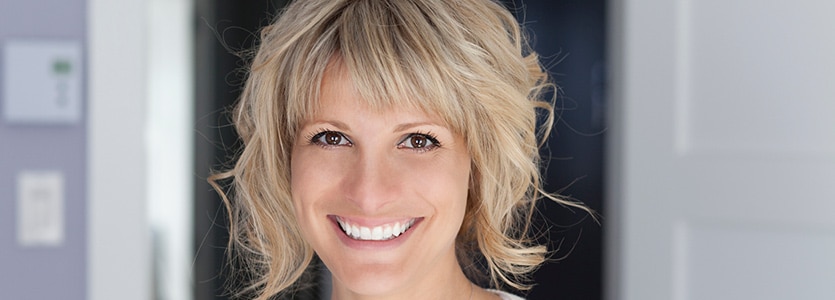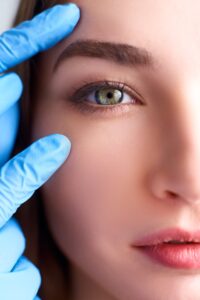
Revitalize Your Appearance
Aging, the environment and your health can all affect your facial and eye appearance. Droopy eyelids and wrinkles can add years to your face and may even block your vision.
The solution might be closer than you think. Hattiesburg Eye Clinic has long been recognized as one of the area’s premier eye care centers, providing a full spectrum of high-quality medical and surgical eye care services. What many patients don’t know is that we’ve also helped thousands of people achieve a more pleasing facial appearance through eyelid and cosmetic treatments and surgery.
Enhancing Your Facial Features – With Physicians You’ve Come To Trust
You’ve probably heard a lot of hype about a number of procedures promising to make you look younger. It’s not always easy to know what’s real and who to trust, and you’re wise to be a little skeptical as all cosmetic procedures are not the same.
At Hattiesburg Eye Clinic, a medical doctor specifically trained in cosmetic techniques will perform your procedure. We’ve invested in the training and technology to provide you with the best possible care. Above all, you’ll receive an honest assessment of what’s possible for your individual case and what you can expect.
Our doctors can help you choose the best approach to treat many skin imperfections including excess skin, acne scarring, age spots, wrinkles and sun damage. We’re skilled and experienced to perform procedures like BOTOX injections and blepharoplasty to correct eyelid imperfections.
Frequently Asked Questions About Cosmetic Eye Treatment:
Your first step is to make an appointment with Hattiesburg Eye Clinic for a consultation to see if you are a good candidate for the procedures we offer. In some cases, we may refer you to other associates depending on your condition and desired treatment.
This is a condition known as dermatochalasis, which is excess skin in the upper or lower eyelids. Dermatochalasis of the upper lids are often referred to as “droopy eyelids;” the same condition in the lower lids is commonly called “baggy eyes.” It’s often an inherited trait related to the plugging up of lubricating glands around the eye.

After the procedure, the patient should return home and rest while keeping ice on their eyes for about twenty-four hours. The ice helps minimize any mild swelling or bruising around the incisions, which often happens. Patients should limit their activities during the first week and refrain from heavy lifting, straining or becoming overheated. We typically remove the sutures in about a week.
The most common and effective treatment to diminish crow’s feet wrinkles is Botox injections in the muscles around the eyes. Botox can be used for other areas of the face that tend to wrinkle such as in the forehead above the nose.
The muscles naturally contract when you squeeze your eyelids shut or frown around the mouth, which over time can cause wrinkle lines. Botox is a chemical agent that causes muscles not to contract – in effect, temporarily paralyzing them. By injecting the muscles with Botox, we stop them from contracting. The wrinkles will then tend to smooth out.
The effect of Botox on the muscles isn’t permanent, so we will need to repeat the injections. The treatment effect initially lasts about 90 to 120 days, upon which you’ll need to have another series of injections. But the longer you receive the treatments, the longer the duration between sessions, perhaps as much as 4 to 6 months.
“Baggy eyes” are excess skin and fat accumulating around the lower eye lid, and is usually a consequence of aging. It can but not always be accompanied by excess tissue in the upper eyelids or “droopy eyes.”
The treatment is called lower lid blepharoplasty and is similar to how we treat excess tissue in the upper eyelids. It’s an outpatient procedure performed with local anesthesia where we surgically remove the excess tissue and fat around the lid, followed by suturing the incisions back in place. After about a week of healing, as well as avoiding strenuous work or similar activities, we remove the sutures and the patient can resume normal activity.
Blepharoplasty is a cosmetic surgical procedure commonly used to remove excess tissue and fat from the upper and lower lids of the eyes. Performed on an out-patient basis under local anesthesia, blepharoplasty corrects “droopy eyelids” and “baggy eyes.” If both lids require treatment, the procedure can be performed at the same time.
Typically, insurance carriers won’t cover elective cosmetic procedures including those involving the eyes. There is, however, one exception: your insurance may cover a blepharoplasty to remove excess skin and fat in the upper eyelid if it’s deemed necessary by an eye physician to improve vision.
This often requires a photograph taken before examination and subsequently a visual field test to determine if the eyelids are causing any visual interference. The results are then forwarded to your insurance carrier. If the tests indicate you need a blepharoplasty primarily for a functional rather than cosmetic reason, insurance may cover the procedure.
This common procedure to remove excess skin and fat from around the lower eyelid is purely an elective cosmetic treatment. As such most insurance won’t cover the cost of the procedure. However, an upper lid blepharoplasty may be needed to improve vision and thus may be covered by insurance. It may be possible to perform both procedures at the same time. You may still have to pay for the lower lid portion of the procedure out of pocket, but with only one surgical fee covered by the other procedure.
Get In Touch With Us:
To learn more about Hattiesburg Eye Clinic and our services please call us at 601 268 5910 or toll-free at 800 624 8254 or schedule a consultation.


